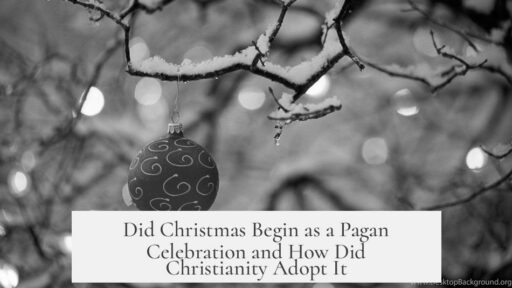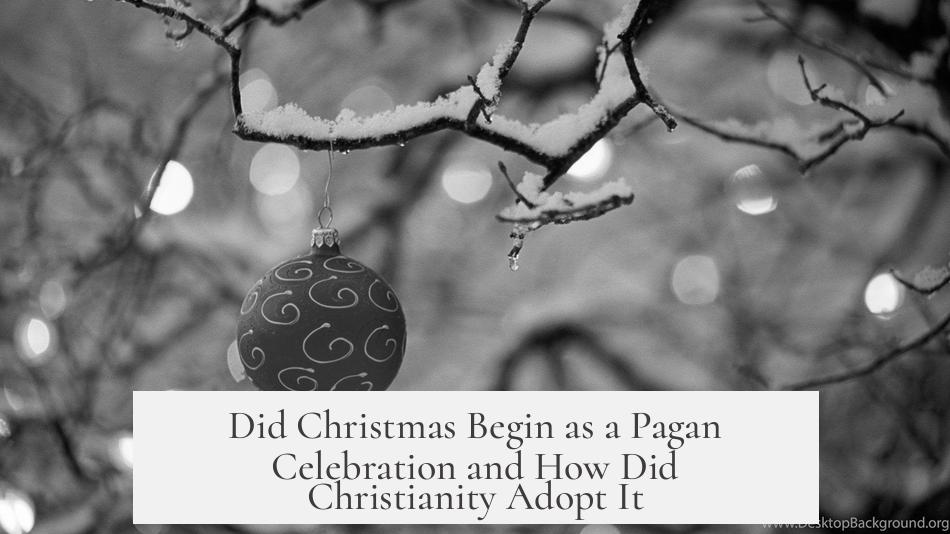Christmas did not originally start as a pagan celebration. Instead, early Christians chose December 25th for theological reasons to commemorate Jesus Christ’s birth. This date aligns with a symbolic connection between Jesus’ conception and crucifixion dates, and it coincides with existing pagan festivals around the winter solstice. Christianity later adapted various pagan customs into Christmas traditions to facilitate conversion and cultural integration.
The early Church aimed to spread Christianity by connecting its holidays to familiar local customs. This approach helped converts from paganism feel comfortable retaining parts of their old traditions, now given new Christian meaning. For example, the evergreen tree, candles, and mistletoe had pagan roots but became part of Christian Christmas celebrations.
Two main theories explain why December 25th became Christmas. The first suggests Christianity adopted the date from pagan festivals like Saturnalia or the Feast of Sol Invictus, which celebrated light and renewal during the winter solstice. The second, widely supported by recent scholarship, argues that early Christians calculated the date based on biblical and theological reasoning. They believed Jesus was conceived on March 25th—the same date as his crucifixion—which led to a birth date exactly nine months later on December 25th.
| Theory | Main Idea | Support |
|---|---|---|
| Syncretism with Pagan Festivals | Christmas aligned with Saturnalia and Sol Invictus celebrations. | Older, popular explanation but challenged by modern scholars. |
| Theological Calculation | Christmas date based on Jesus’ conception and crucifixion dates. | Supported by early Christian writings and Western scholarship. |
The Roman emperor Constantine did not invent Christmas or establish its date. While Constantine promoted Christianity to unify his empire, the Council of Nicea addressed doctrinal issues, not feast days. The first official declaration of December 25th as Jesus’ birth date came later from Pope Julius I. Meanwhile, Christians were already celebrating on that date before Constantine’s reign.
Many Christmas customs retain clear links to pagan origins:
- German Christians introduced the Christmas tree tradition.
- Martin Luther added candles to trees, inspired by natural light symbolism.
- Kissing under mistletoe comes from Celtic Druid rituals.
- The Yule log and the “fairy” tree topper reflect ancient winter solstice practices.
- Gift-giving and feasting echo Saturnalia and Yule customs.
These old customs were “baptized” into Christianity, meaning the Church reinterpreted them to fit Christian theology rather than abolishing them. This strategy helped the Church assimilate pagan cultures without eradicating their familiar rituals.
Winter solstice celebrations have ancient origins in many cultures. Romans observed Saturnalia, a festive week of light and generosity. Germanic and Norse peoples celebrated Yule to mark the return of longer daylight and new beginnings. Early Christians adapted this theme of light overcoming darkness to symbolize Jesus as the “light of the world.” This thematic overlap helped Christianity resonate during the darkest part of the year.
The historical development of Christmas is complex and varies by region. Some Christian groups opposed Christmas for its pagan ties, especially during the Protestant Reformation and English Civil War. Others embraced and expanded it. Today, many Christmas traditions differ worldwide but retain influences from earlier pagan and Christian practices.
Choosing December 25th served a dual purpose. It aligned Jesus’ birth with his death in Christian theology, reflecting the belief that prophets were conceived on the day they died. Additionally, celebrating near the winter solstice offered rich symbolism about moving from darkness into light.
“From Jewish mysticism: prophets were believed to be conceived on the day they died; Jesus’ death is commemorated on March 25, leading to a birth date nine months later on December 25.”
Caution is necessary when exploring Christmas origins. Many false claims circulate, such as Constantine inventing Christmas or it being purely a pagan creation. Historical evidence and scholarship reveal a nuanced picture where Christianity deliberately integrated certain elements of pagan culture while maintaining distinct theological meanings.
- Christmas arose from early Christians selecting December 25th for theological reasons, not simply copying pagan festivals.
- The date coincides with the winter solstice, connecting Christian and pagan symbolism of light returning.
- Many Christmas customs have pagan roots but were adapted and reframed by Christianity.
- Constantine did not invent Christmas; its observance predates his reign.
- The evolution of Christmas involved cultural blending over centuries with regional variations.




